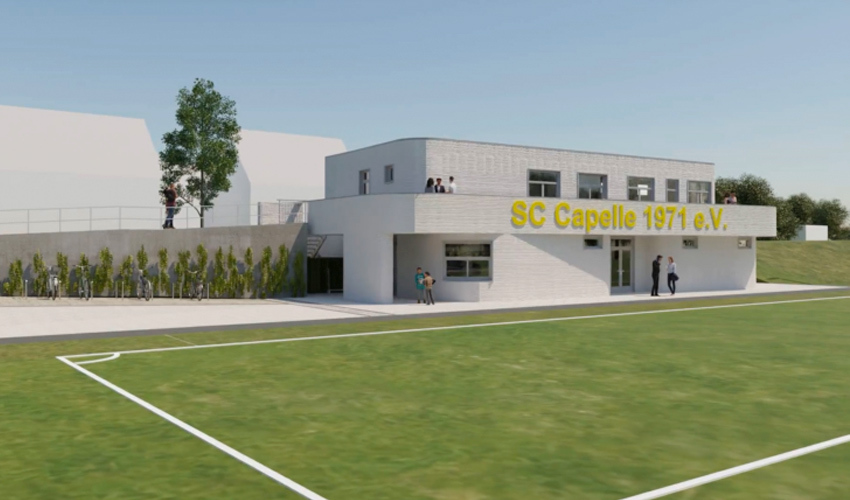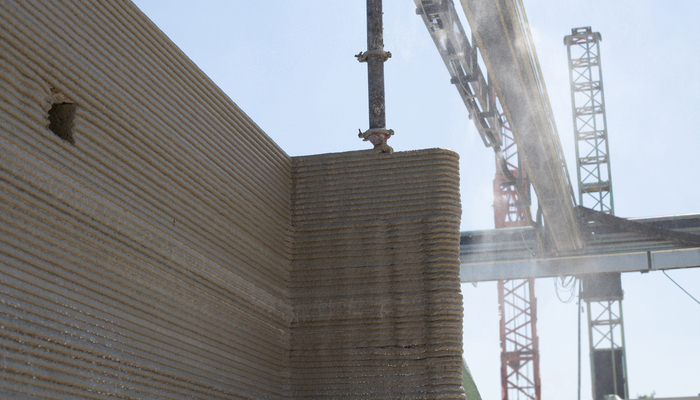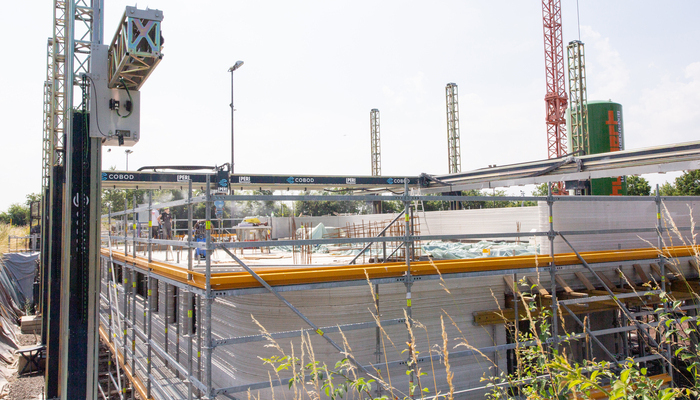SC Capelle Soccer Club’s 3D Printed Public Building Sets New European Standards

The construction industry is undergoing significant transformations due to the advancements in 3D printing technology, which are creating a multitude of new possibilities. In this field, additive manufacturing stands out for its cost efficiency, speed, and sustainability. COBOD, a company dedicated to intelligent construction, has made it their mission to promote this approach with their versatile printing robots. By using COBOD 3D printers in construction, it is projected that approximately 50% of construction work can be automated, leading to long-term reductions in carbon emissions. These printers have already been successfully employed in Europe’s first 3D printed buildings, villas in Dubai, wind turbines, and the largest 3D printed building in Heidelberg. The latest addition to this series is Europe’s first public 3D printed building, the soccer clubhouse of SC Capelle in Nordkirchen, which is being undertaken by the PERI Group.
In 2018, the PERI Group acquired a stake in the Danish company COBOD, resulting in a close collaboration between the two companies. For the construction of the clubhouse, the PERI Group relies on the COBOD BOD2 3D printer. This advanced printer is expected to complete the two-story clubhouse, measuring 25 x 15 x 10 meters, in just 140 hours. The soccer club will thus have approximately 330 square meters of usable space. The design of the clubhouse, created by the innovative architectural firm Steinhoff, has also received special attention. Not only does the clubhouse for SC Capelle from the 3rd league showcase groundbreaking technology, but it is also visually stunning. The combination of technology and aesthetic appeal represents the prevailing concept of progress, which extends beyond urban areas to rural regions as well. Mayor Dietmar Bergmann of Nordkirchen comments, “This initiative serves as a clear indication that small towns in rural areas can also drive innovation and future technologies. With the substantial financial support from the Ministry of the Interior of the State of North Rhine-Westphalia and the expertise of our project partners, we are realizing a construction project in Nordkirchen that not only garners attention locally but also beyond our region.”

Europe’s first 3D printed public building is a testament to sustainability and innovation. (photo credit: PERI 3D Construction)
The 3D printer enables faster, more cost-effective, and environmentally sustainable construction. With additive manufacturing, issues like labor shortages and extended construction timelines are eliminated. Dr. Fabian Meyer-Brötz, Managing Director at PERI 3D Construction, emphasizes the sustainable usage of materials: “In light of significant challenges such as skilled labor shortages and stagnant productivity in the construction industry, 3D construction printing offers a much-needed solution to build faster, more affordably, and with reduced material consumption.” The concrete used, provided by Heidelberg Materials, is a cutting-edge building material that is 100% recyclable as a mineral substance. It is particularly well-suited for 3D printing due to its pumpability and extrusion properties.
The First Public 3D Printed Building Shifting the Paradigm
Advancements in technology and the ability to incorporate intricate and creative designs are revolutionizing the construction industry, with far-reaching implications for building methods in the future. A notable trend is the gradual shift from 3D printed residential structures like apartments, private houses, and hotels towards 3D printed public buildings. This transformation is not limited to a specific region, but rather is observed on an international scale.
Henrik Lund-Nielsen, Founder and General Manager of COBOD International, enthusiastically embraces this development, stating, “This new project by PERI exemplifies how our printers can be used beyond low-rise construction. This upcoming 3D printed building will serve as the first-ever soccer clubhouse and public structure created through this innovative technique. Additionally, following the recent completion of the world’s largest 3D printed building—an impressive luxury horse barn spanning nearly 1,000 square meters in Florida—numerous examples of non-residential 3D printed structures are now emerging.”

The COBOD BOD2 3D printer is extremely fast and efficient. (photo credits: PERI 3D Construction)
Hence, we can anticipate that the 3D printed clubhouse in Nordkirchen will mark the commencement of a sequence of 3D-printed buildings that will significantly influence our urban and rural environments in the times ahead. For additional details, please refer to the link HERE.
What do you think of SC Capelle’s 3D Printed building? Let us know in a comment below or on our LinkedIn, Facebook, and Twitter pages! Don’t forget to sign up for our free weekly Newsletter here, the latest 3D printing news straight to your inbox! You can also find all our videos on our YouTube channel.
*Cover photo credits: STEINHOFFarchitecture






